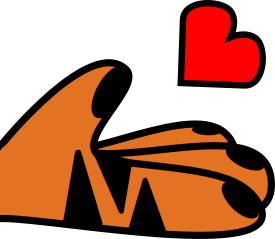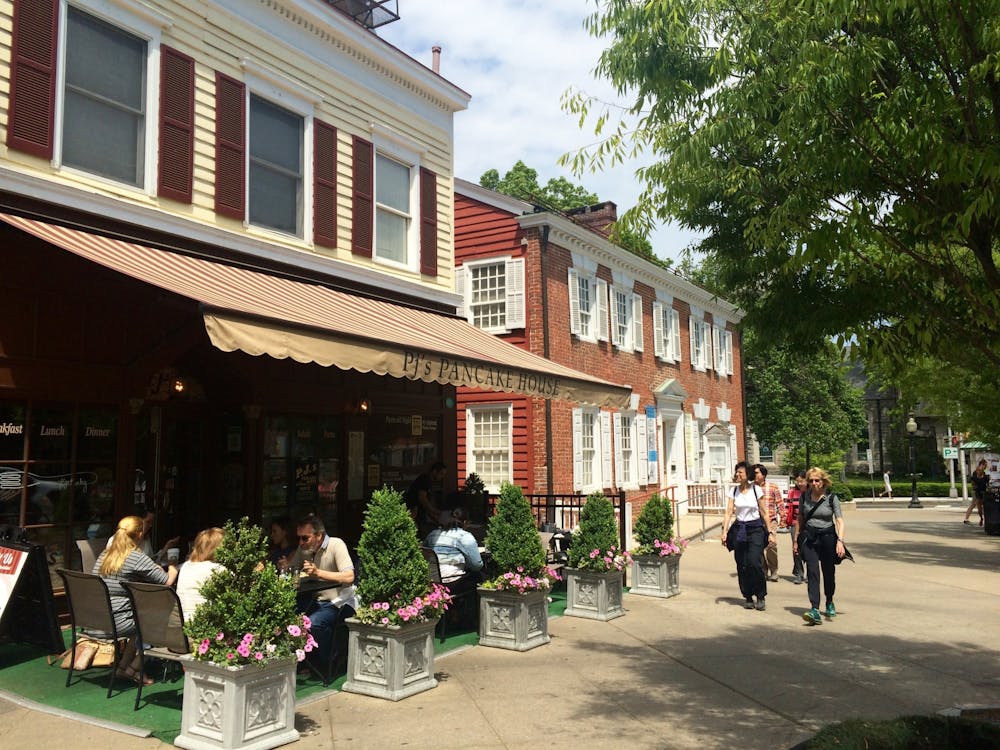It's 11:15 p.m. on a balmy late-July night in Valencia, Spain, and I should be out at dinner. As I stroll down the Gran Via de la Turia in a white Nautica button-down, Polo Jeans and Sperry topsiders, passersby might think I am meeting friends for drinks or catching a movie before the discotheques open at around 2 a.m. But I'm not. If someone Spanish asked me for directions, I would understand and even respond fluently, but since I arrived, no native Spaniard has attempted to strike up a conversation and I have no reason to believe tonight will be any different. This Friday night will probably be the same as every other since I began living on my own in Valencia almost two months ago. The only people I've talked to are the ones I work with.
My actual job is unimportant. It has only given me the excuse and the financial capability to live in Spain for three months. Since I stepped off the plane roughly seven weeks ago, Friday nights have been "on my own, on the town" nights. Every Friday at 10:30 p.m., I amble down from my apartment through the Jardin de la Turia, till I get to the Gran Via, following it toward the old town, hoping to find some semblance of acceptance or some modicum of familiarity. The familiarity will never come; it wouldn't come in a lifetime. It's the kind of familiarity that goes deeper than street recognition or bus-schedule memorization; it's the empty chair at a table full of friends that's calling your name at dinnertime. I see boisterous, jubilant, full tables left and right as I continue down the Gran Via, but it's the single barstool in "La Esquina," a dive of a tapas bar, that's calling my name. Sitting on my stool, reading the bar's terse menu and peering out over the moonlit palm trees of the Gran Via, I consider that I've learned more about Valencia than I ever wanted to know.
Situated on the eastern coast of the Iberian Peninsula, Valencia is one of the warmer, dryer areas of Spain and not one particularly known for its beer. If you've come there for the beer, I would suggest changing travel agents. As beer is a relatively universal drink, even the Spanish have Mahou and San Miguel, their equivalents of Budweiser and Coors — not exactly high-quality. In a country where alcohol is sold to anyone tall enough to see over the counter, it is easy to see how such a plebian drink as beer gets pushed to the side. Why drink what 11-year-olds drink?
The real drink of Valencia is Sangria: a fruity, lively, enlivening mixture of rose wine and diced citrus. Beer is a very particular drink: bitter, dry, light, dark, pilsner, ale, stout or malt, each has its time and place and there is a rhyme and reason to how it is drunk. By contrast, Sangria may be the only alcoholic beverage beside a Mimosa or a Bloody Mary that you can acceptably drink with brunch. The one caveat of Sangria is that you cannot drink it alone.
You can sidle up to a bar anywhere in the world, order a beer with a nod, eat a few peanuts, watch 20 minutes of ESPN and be on your way, never speaking a word to anyone. But not so with Sangria. Beer comes in bottles, pints or glasses; Sangria comes in pitchers, and the rules of social society preclude you from ordering your own pitcher of anything.
Sangria goes hand in hand with paella, the quintessential Valencian dish, a glorious mix of flavors from the Spanish plains and the Mediterranean Sea. A tantalizing amalgam of rice, saffron, seafood, vegetables and meat, authentic Valencian paella is worth the plane fare to Spain. Cooked in monstrous pans over open flame, paella preparation is just as important as its consumption. The open-range-pan technique is traditional, but also practical — no conventional oven could safely hold the full paella vessel. Restaurants will not serve any paella dish to fewer than four people at a time. If you're on your own in Valencia, go to a tapas bar and get an order of fried calamari — the squid comes straight out of the Med and hasn't the time to get rubbery — but don't order paella unless you are capable of sharing the cultural experience.
Valencians take their food, drink and culture seriously. Meals are the daily staple, not a hit-or-miss fast food adventure that happens on the way from work to the gym. In fact, there is no Valencian equivalent of fast food except what Americans have exported. There are also no gyms. Valencia moves at a painstakingly slow pace. Putting a New Yorker there is switching the record from 72 to 33 and listening as the melody is plunged painfully into a scratchy, chaotic mess. For all their torpidity, though, Valencians make the most of their days by making the most of their meals. With coffee at 8 a.m. and pastry and coffee again at 10, the two-part Valencian breakfast breaks up the morning into manageable sections. Lunch, the main meal of the day, happens at 1:30 or 2 p.m., right before siesta. Mail your letters before 1 p.m.; that's when the post office closes for the day. Need a haircut? Read the sign: "regresamos a las cinco" — we will return at five. The Spanish drink together, eat together, nap together and then drink together again. Dinner often takes most of the night. It can start anywhere from nine to 11 p.m. and won't end until midnight or, on weekends, 1:30 a.m. Dinner is a multicourse affair beginning with cheese and carpaccio and ending with fruit and a petit cafe negro. Sangria flows everywhere in between.
Valencian restaurants are tiny and, like many locales on the dry, temperate, Mediterranean Spanish coast, rely on sidewalk-seating. The sidewalks, in fact, seem designed for this purpose. Two or three times the width of those in U.S. cities, they are wide enough to fit three pedestrians abreast and not interfere with anyone sitting down to a pleasant evening meal in the balmy dusk twilight. Dinner conversation crosses the table, the sidewalk and even the street. If you can't hear the group across the street, they must not be having a good time. Street minstrels stroll between the tables playing old favorites. Most regulars know them by name and have a typical request; some invite the musicians to join the meal. Valencia's social atmosphere starts at the table and spreads through the town like a catchy tune over pop radio stations. There are no "private" games of football in the park.

Ask anyone about their trip to Spain's third-largest city and count the hours as they ramble on about the delicious wine, the white beaches and the quaint architecture. You will undoubtedly hear about long romantic dinners and lazy seaside days sipping Sangria. Valencia's tourist mask is flawless. There are no chinks in the armor, no obvious defects or visible cracks. Spain takes its mask off for very few foreigners, and I count myself as one of the privileged few who have stayed long enough to see Valencia for the Janus it is.
Any tourist's first few weeks in Valencia pass in Sangria-soaked, paella-stuffed bliss, but the mask gradually wears away. Valencians single out those who overstay the vacationers' welcome, and Spain-loving becomes unrequited passion at its most furious. The Jardin de la Turia — Valencia's Central Park — is packed dawn and dusk with runners sporting Nike and New Balance, keeping pace with the Kelly Clarkson on their iPods, a far cry from true Valencians, who don't even run to catch the bus. These foreign runners, like me, have been here long enough to exhaust the suggestions in the Time-Out Valencia guide and long enough to swap a relentless love of the sun for anticipation of a rainy day to break up the 320 mild days Spain gets each year. The temporary Valencian citizen is one dot too many in Seurat's Grand Jatte: the last speck that ruins the masterpiece.
As a foreigner living in Valencia, I am a bottle in a world of pitchers. Valencia's ambience, beauty and intimate social atmosphere are undeniably enchanting. Always a visitor, I can see it all from the bar where I wash down my tapas with a bottle of Heineken.








